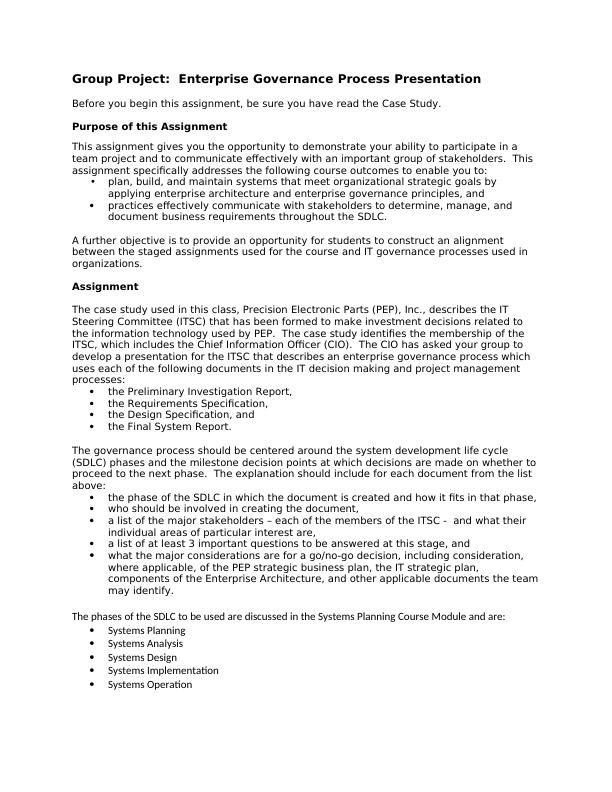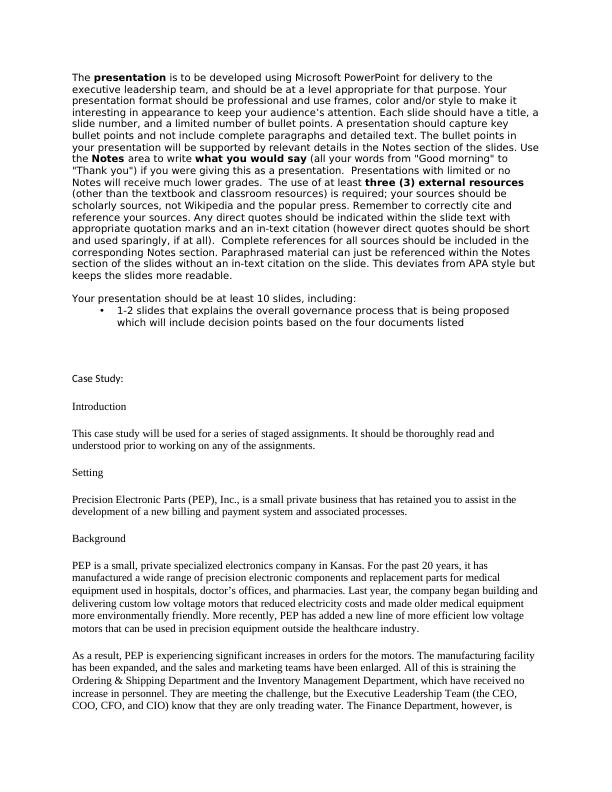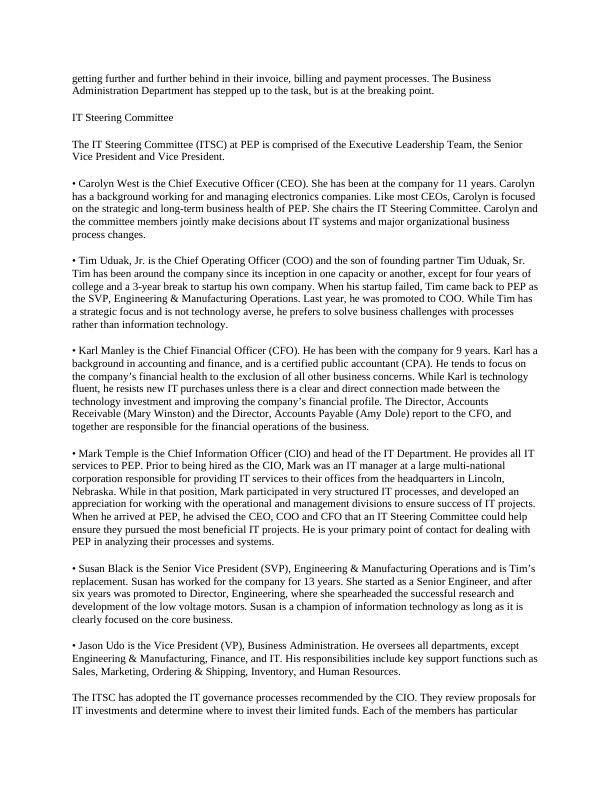Ask a question from expert
Developing an Enterprise Governance Process for Precision Electronic Parts (PEP), Inc.
9 Pages3278 Words251 Views
Added on 2019-09-22
About This Document
This assignment requires students to develop a presentation for the IT Steering Committee (ITSC) of Precision Electronic Parts (PEP), Inc. The presentation should describe an enterprise governance process that uses documents like Preliminary Investigation Report, Requirements Specification, Design Specification, and Final System Report. The governance process should be centered around the SDLC phases and milestone decision points. The presentation should include the involvement of stakeholders, important questions to be answered, and considerations for go/no-go decisions. The presentation should be professional and use frames, color, and style to make it interesting. At least three external resources should be used, and sources should be scholarly. The presentation should be at least 10 slides.
Developing an Enterprise Governance Process for Precision Electronic Parts (PEP), Inc.
Added on 2019-09-22
BookmarkShareRelated Documents
End of preview
Want to access all the pages? Upload your documents or become a member.
Preliminary Investigation Report for Precision Electronics Parts, Inc.
|2
|773
|281
Enterprise Architecture Assignment | IT Management Process
|5
|1309
|411
Stage 4:. Final System Report. Before you begin this as
|2
|797
|264
case study part 3 – ms powerpoint executive presentation
|6
|1406
|480
ITPM 540: Enterprise Architecture & Integration Homework and Quiz
|4
|1363
|384
UTEC3015 - Understanding Technology Assignment
|14
|2205
|124


